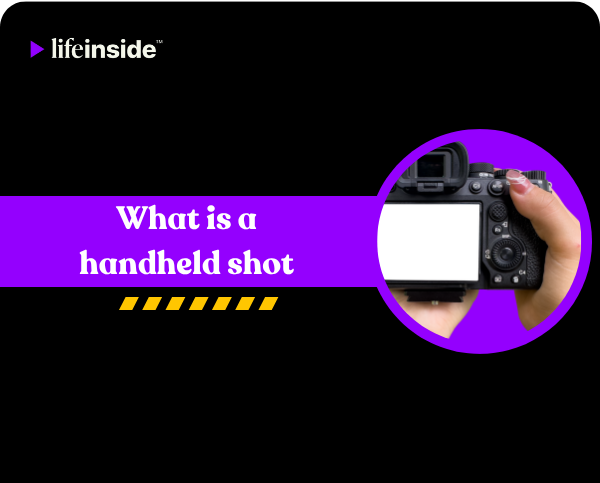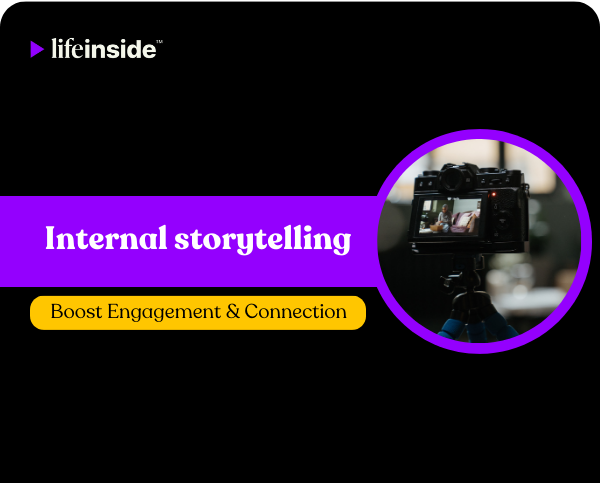For many filmmakers and videographers, a handheld shot is easy, but dangerous. With handheld cameras, the footage can be captured more laid-back and personal – what the audience thinks may actually be happening. But the lens has the ability to magnify even little movements. When utilizing a handheld camera, if specific techniques are not followed, the resulting wobbly recordings can range from being slightly irritating to being amateurish.
Understanding the Handheld Shot
Since the introduction of cinema, camera support systems have been significant to directors and cinematographers. Camera support systems have changed with the arrival of tripods, dollies, and cranes. But one approach doesn't depend on any of these processes and has only become more popular over time. The shot from the handheld.
Hand-held shots in movies makes the audience feel a sense of realism and urgency. The invention of handheld shots has changed the face of cinema from its mumblecore days during the age of silent film and new wave revival.
It's important to know that filmmakers have definitely utilized the handheld camera to have a psychological impact and not just because it looks cool. But before we dive into the why and the how, though, the what. What is handheld cinematography?
Definition of a Handheld Shot
"Hand Held Shots" is the method of using a hand-held camera to capture a distinctive look with a wobbly camera effect. This technique is well known for its unvarnished and authentic vibe, which often lends the photos a feeling of spontaneity and reality.
A handheld shot technique is used in many popular films. Cameras installed on stationary tripods produced solid, still images for early motion pictures. A lot of reviewers and filmmakers have considered the handheld shot to be an artistic endeavor.
The Origins of Handheld Cinematography
As early as 1925, filmmakers began experimenting with handheld shots. Movies shot using handheld cameras became widely available after the 1960s.
The experimental director, Jonas Mekas recommended the handheld shot technique as it gave him more creative and budgetary flexibility. The handheld shot was most famously utilized by French New Wave pioneer Jean-Luc Godard at a period when it was regarded as unconventional.
Breathless is Godard's most famous film and one of the classic handheld shots examples. Both praise and criticism were leveled at Godard's use of jump cuts and hand-held shots. The movie would have a lasting impact on a whole generation of filmmakers.
Why Do Filmmakers Use Handheld Shots?
Although handheld camera work may initially appear unrefined or unstable, directors purposefully employ it to further the plot. Handheld shots provide a raw and immersive visual experience that typical setups frequently can't match, whether it's in high-energy chase scenes or bleak reality.
Creating a Sense of Realism
A sense of closeness and realism is expertly created by handheld cinematography. The movements of the camera replicate the organic movements of the human eye. The emotional impact of handheld shots draws the audience into the scene. "Breathing with them," as cinematographer Idziak put it, emphasizes how the camera becomes an extension of the operator's body. The viewer's emotional involvement is increased by this relationship.
We forget we are seeing a scripted piece when we watch documentaries or found-footage movies because of the handheld camera technique. It removes the gloss and gives scenes an unpolished, unrehearsed, and genuine vibe.
Adding Emotional Intensity
A handheld shot can enhance every moment when emotions are running high on screen. The camera's mild instability reflects the actors' internal conflict, whether it's a furious quarrel, a chaotic battlefield, or someone sobbing by themselves in a room.
Tension is increased by this instability, creating a feeling of uneasiness and as though anything could happen. It's a potent instrument for vulnerability as well. Every breath, tear, and abrupt movement is captured in real time by the camera, which transforms from a passive recorder to a worried watcher.
Mobility and Flexibility
Occasionally, the narrative simply cannot wait for a tripod. Cinematographers may move fast and follow the action without missing a beat while using handheld shots. Handheld cameras can go where rigs and dollies cannot in erratic or fast-paced situations, like as a chase through a busy city or a combat zone.
They are ideal for situations when the director wants the camera to feel alive and change speed with the players, such as dynamic blocking or confined quarters. Filmmakers can respond in the moment and have more creative control thanks to this freedom, which can result in some of the most impactful and unrehearsed shots in a movie.
Techniques for Shooting Handheld
There is more to handheld camera movement techniques than simply picking up a camera and pressing the record button. To make the footage useful while preserving that unprocessed, natural feel, a combination of skill, preparation, and the appropriate equipment is needed. Handheld camera technique may be both liberating and difficult, depending on whether you are shooting a spontaneous documentary moment or a gritty independent film.
Choosing the Right Equipment
To become an expert handheld shooter, you need to select an equipment that allows mobility without compromising image quality. For comfort and more fluid movement, you should go light.
Lightweight Cameras
Cameras that are lightweight are revolutionary. Common choices would be DSLRs, mirrorless cameras or small cinema cams such as the Canon C70 or Blackmagic Pocket. They let you easily control movement and framing and shoot for long hours without fatigue.
Rigs
Shoulder rigs or cages are an excellent compromise for individuals who desire a little extra stability without sacrificing the handheld look. Particularly for longer takes, they lessen excessive shake and more evenly distribute weight. A need for run-and-gun installations, they also provide mounting options for microphones, monitors, and additional batteries.
Gimbals
Gimbals can also be quite useful if your scenario requires smooth motion with a handed feel. The 'imperfection' of handheld shooting is eliminated by gimbals, according to purists, although contemporary directors frequently employ them to combine dynamic movement and audience comfort.
Tips to Minimize Shakiness
Although handheld filming gives your footage more life and realism, excessive shake can be annoying or even unsettling for viewers. Controlling movement is the aim, not completely stopping it. Here are some easy, practical ways to help you maintain the usability and fluidity of your handheld photographs.
Use Your Body as a Stabilizer
Your body serves as the stabilizer in addition to holding the camera. To make your center of gravity closer, keep your elbows close to your torso. Imagine yourself as a soft-jointed tripod. You can absorb movement and avoid abrupt jerks by maintaining your stance solid and slightly bending your knees. Try the "ninja walk" if you're walking; it involves taking small, gentle steps while bending your knees to lessen bounce in your video.
- Use Camera Straps: Although it may seem simple, a basic camera strap may be really effective. Pull the camera forward until the strap is firm, then tighten the loop over your neck. This enhances tension, so as can steady the camera better when shoot with mirrorless or csc or compact DSLR cameras. It’s a tried-and-true system that still does the job.
- Keep Practicing: Good technique, which only comes with practice, cannot be replaced by any amount of equipment. Take your time trying out various walking techniques, grips, and moving frames. Consider recording routine sequences at home or accompanying a friend about. You'll automatically get a steadier hand and a greater sense of how your actions impact the frame as time goes on.
Handheld vs Stabilized Shots
The decision between handheld and stabilized shots is based on what the scenario requires, not on which is superior. Knowing when to employ each style can significantly improve your storytelling because each has its own vibe and function.
Handheld Shots - Pros
- It provides closeness and reality by making the audience feel as though they are actually there, not just watching.
- The natural shake adds urgency and rawness, making it ideal for scenarios that are emotional or chaotic.
- Simple to move with the subject in confined areas or uncertain situations.
- Technique and practice are more important than expensive equipment.
Stabilized Shots - Pros
- A polished and professional appearance: Perfect for slow-motion sequences, commercial productions, or cinematic narratives.
- Excellent for sweeping pans, tracking views, and glides.
- Consistency is easier to maintain, particularly when using visual effects or filming many takes.
- Lessens weariness and improves framing concentration.
Handheld Shots - Cons
- Overuse of shake can be annoying because it can wear the viewer out or disrupt their immersion.
- Repeating across several takes is more difficult since little changes in each take might break the flow.
- Unsuitable for fluid, cinematic images: Particularly if you want a refined or surreal appearance.
Stabilized Shots - Cons
- Sometimes lacks the emotional impact or authenticity of handheld: can come out as overly tidy or detached.
- Steadicams, dollies, and gimbals can be hefty and restrict movement.
- Purchasing more equipment typically entails spending more money and taking longer to set up.
Examples of Handheld Shots in Popular Films
Iconic Scenes Using Handheld Techniques
There are certain action films that demonstrate the misuse of the handheld shot. However, some filmmakers have discovered ways to increase intensity and emotion. A handheld shot's camera wobble visually heightens the tension of tumultuous scenes including panic, action, or urgency.
In Saving Private Ryan, one of his best films, Spielberg was a master of this tactic.
Spielberg and his cinematographer Janusz Kaminski employed handheld shooting to underscore the confusion and intensity of battle.
Because of how well the handheld camera captured the chaos, many historians and veterans of the actual Normandy invasion rank Saving Private Ryan as one of the greatest World War II movies ever made. This opening battle scene contains innumerable shots that are arguably the greatest handheld shots in movie history.
If the scene had been captured using a smooth stabilizer or even a static tripod, it would not have been as impactful. This film explores in greater detail the elements that contributed to the scene's realistic depiction of conflict.
The storytelling potential of a handheld shot is best seen in this opening scene. Understanding the feelings of a scene and how your chosen tactics might contribute to evoking those feelings is crucial.
Impact on Audience Perception
In addition to altering a film's appearance, handheld shots also alter its feel. This method has a significant impact on the audience's emotional reaction and degree of engagement.
Handheld photography transforms the camera from an observer to a participant in the scene. The spectator is informed that what they are viewing is unvarnished, unprocessed, and potentially happening in real time by the faint shake, faulty framing, and natural movement. Audiences find it simpler to relate to the characters and the stakes because of this intimacy.
Consider scenes that are emotionally charged, such as a breakup, a car chase, or a soldier rushing through conflict. The turmoil or fragility is heightened with a handheld camera, which draws viewers into the action and allows them to experience the protagonists' sense of urgency or instability. From well-crafted narrative to experienced reality, the tone changes.
Handheld photos have the power to express closeness even in more subdued settings. The audience may feel as though they are dangerously close to someone's private world as the camera sways subtly, almost breathing with the character.
To put it briefly, handheld cinematography is more than just a style decision. Without a single word being spoken, it's a storytelling technique that engages the audience on a visceral level, bringing them closer, evoking anxiety, or placing them right in the middle of the action.
Handheld Cinematography in Interactive Video Platforms
The role of cinematography is changing as interactive video platforms like Bandersnatch on Netflix, choose-your-own-adventure stories on YouTube, and virtual reality experiences become more popular. Surprisingly, handheld shots are becoming more and more significant. Handheld cinematography brings a new level of authenticity and immersion in various mediums, as viewers are active participants rather than merely passive viewers.
Engaging Users with Movement
Making the audience feel as though they are within the world is more important for maintaining their interest in interactive material than simply conveying a story. That's exactly what handheld shots do.
Particularly in first-person or immersive scenarios, the delicate swing of a handheld camera reflects how humans naturally view and move across space. It makes the audience feel as though they are running, walking, or even hiding with the characters. For scenarios where user decisions have a direct impact on the outcome, this movement feels more responsive and intimate. It draws spectators farther into the experience by enhancing the tension, intensity, and urgency.
When every choice counts, a static camera can seem indifferent. However, handheld movement makes the viewer feel as though the world is responding in real time.
Seamless Transitions in Interactive Scenes
Maintaining a seamless transition between various storylines is one of the most difficult tasks in interactive media. Handheld photographs excel in that situation.
Handheld film allows for greater framing and continuity flexibility than locked-off camera angles. It enables artistic transitions that seem organic, such as a gradual tilt down to an object that initiates a new interaction or a fast pan to a door before transitioning to the next scene. By concealing the "jumps" between tale branches, these dynamic changes maintain the experience's fluidity and immersion.
It is simpler to integrate various results or reactions without startling the audience because handheld video feels so natural. By softening the edges of branching narratives, it makes changes seem natural rather than like a shift in course.
Conclusion
Point-of-view camera work is a storytelling tool and not simply a matter of style. Used for anything from dynamism to emotional weight to a greater sense of verisimilitude, the handheld shot plunges the viewer into the action. It can lend a scene a real, instantaneous and downright human effect.
A handheld camera technique has developed into a flexible tool that can be tailored to a filmmaker's vision. It starts with the early experimental work of directors like Jean-Luc Godard and continues through the heart-pounding intensity of Saving Private Ryan and the immersive narrative of interactive media. The payoff is a degree of engagement that's difficult to duplicate with more polished, stabilized photos, despite the fact that it can be unpredictable and requires a steady hand and careful technique.
Handheld cinematography is still relevant in a society where viewers want emotional nuance and honesty. Knowing when and how to go handheld may improve your storytelling and transform shaky frames into memorable moments, regardless of your level of expertise as a filmmaker or as a novice picking up a DSLR.
Frequently Asked Questions
1. Why do directors use handheld shots?
Handheld shots create an intimate, authentic and urgent feeling in films. There’s, indeed, a minor shaking that occurs with the camera, simulating the way a human body naturally moves, that makes us, as the viewer, feel like we’re literally present with these characters. This provides a way to raise dramatic tension, to keep the readers/gamers/audience on their toes or feel like they are participants in the event (specifically during any action, suspense or high stress moments). For directors, the handheld shots also offer flexibility and movement, which can be useful when actors are moving quickly or unpredictably.
2. What equipment is best for handheld shooting?
The secret to handheld shooting is to select gear that allows for mobility while maintaining high-quality video. Lightweight cameras like DSLRs, mirrorless, or compact cinema cameras (like the Canon C70 or a lot of the Blackmagic Pocket series) are popular because they combine size, weight, and control into one. If you want a bit more stability in your hand-held work then you could consider shoulder rigs or cages. While purists may avoid them since they reduce some of the natural wobble of handheld video, gimbals can be used, too. Ultimately, it's all about finding the right balance of control, comfort and flexibility for the shoot you'll be shooting.
3. How do handheld shots affect the viewer emotionally?
Handheld shots have ability to ripple the viewer’s emotion by multiplying the chaos and urgency. Be it a tense nail-biter, a tragic moment, or heated drama, viewers could be forgiven for feeling trapped in middle of the action thanks to the camera's inherent shakiness. Emotional heat is generated increasingly and strategically by virtue of the camera’s closeness to the actors, extending to a kind of urgency or vulnerability or instability that the camera itself seems, effect-wise, to want to reach out and join in. Handhold shots basically up audience's emotional involvement with the story by getting them closer to the characters.
4. When should filmmakers avoid using handheld shots?
Even though they can be effective, handheld photos aren't always suitable. In sequences where a more steady, controlled image is needed, filmmakers should refrain from using handheld shots. For instance, the shaky quality of handheld footage may ruin the mood if the situation demands a calm, elegant, or grand ambiance. Additionally, handheld images should be avoided in scenarios like formal settings or slow-paced conversations where too much shake could distract or unnerve the audience. Static cameras or stabilized photos are a preferable option in these situations to preserve the intended atmosphere and visual clarity.




